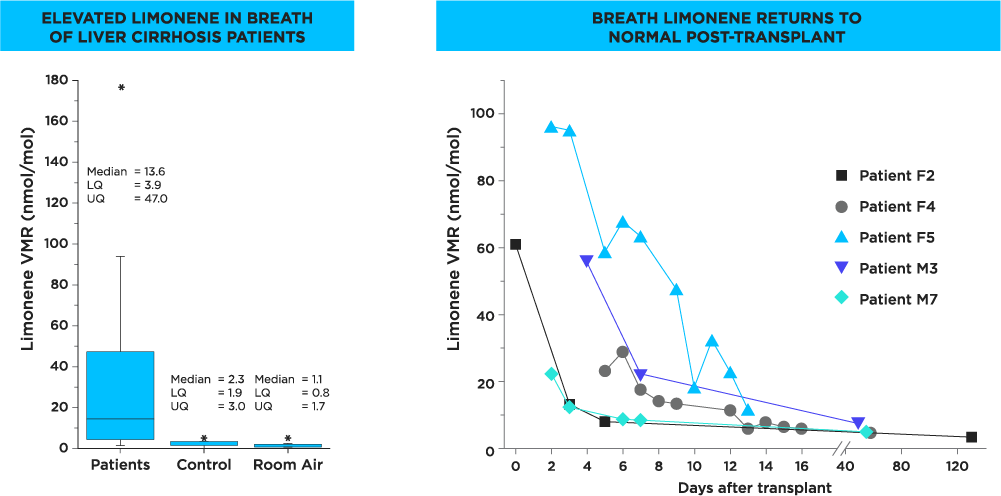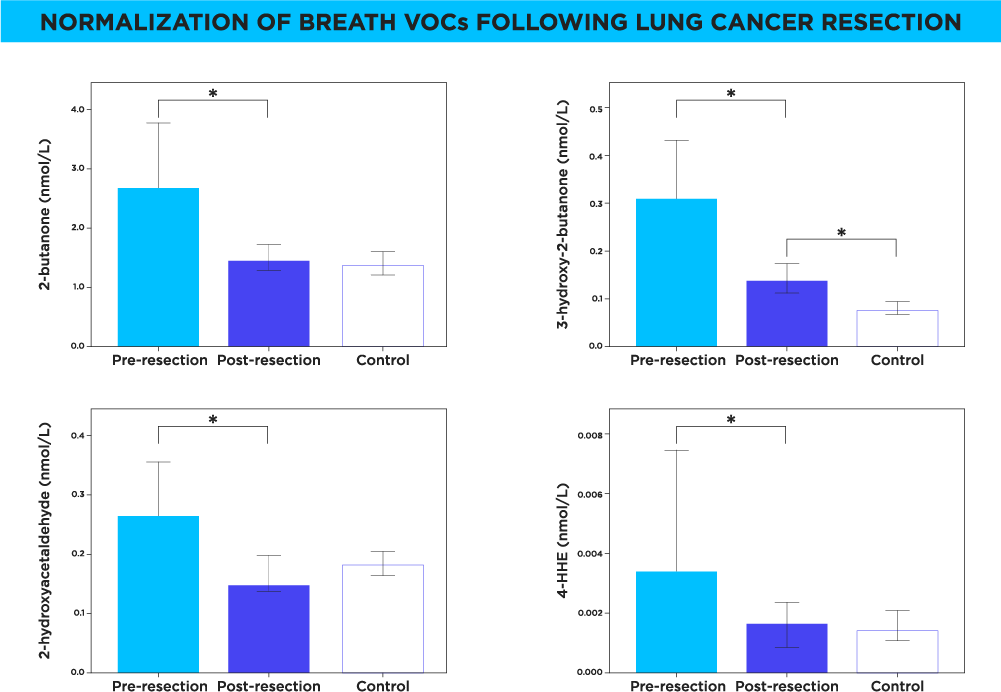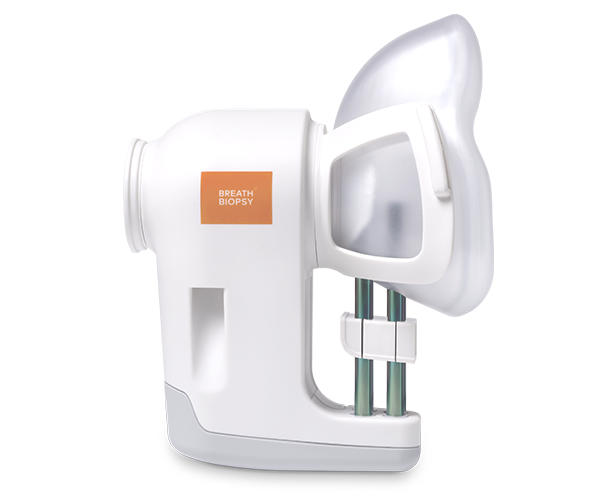Examples of Longitudinal Measurements of Breath VOC Biomarkers
Published on: 29 Nov 2017
Exhaled breath contains thousands of volatile organic compounds (VOCs), valuable biomarkers for a wide range of diseases. Measuring VOC biomarkers in breath over time could offer a completely non-invasive way of monitoring health and diagnosing disease.
Breath Biopsy® can be used to monitor longitudinal change in exhaled VOCs, and discover the potential of biomarkers for monitoring:
- Disease burden
- Disease recurrence
- Therapy response
- Changes pre- vs. post-treatment or surgery
What are VOC biomarkers?
The VOCs present in breath reflect metabolic processes taking place in the body, as well as its microbiome and environmental exposures. As VOCs in the bloodstream are efficiently exchanged with air in the lung’s alveoli, measuring VOCs in exhaled breath could provide a picture of metabolic processes occurring throughout the body non-invasively.
Example 1: Breath Limonene returns to normal levels after liver transplant
Patients suffering from liver cirrhosis are observed to have raised levels of limonene (and other VOCs) in their breath1-3. Limonene is not produced in the human body, but is found in many common foodstuffs. Increased levels of the compound found in patients with cirrhosis is due to the liver failing to produce enzymes necessary to metabolize ingested limonene, causing elevated levels in patients which can be detected in breath (Figure 2a).
Measurements by Fernández del Río et al.4 found that after liver transplant, elevated limonene levels in the patient’s exhaled breath returned to normal (Figure 2b) as the metabolism of limonene resumes, demonstrating that VOCs in breath can be used to monitor a patient’s response to therapeutic intervention.

Example 2: Normalization of Exhaled Carbonyl Compounds After Lung Cancer Resection
Carbonyl compounds 2-butanone, 3-hydroxy-2-butanone, 2-hydroxyacetaldehyde and 4-hydroxyhexanal are present at elevated levels in lung cancer patients’ exhaled breath5,6, and are proposed as good targets for cancer screening tests7.
Schumer et al.8 examined the trends of these exhaled carbonyl compounds after resection of malignant nodules in lung cancer patients. The authors found that after surgery to remove cancerous tissue, the concentration of all four compounds in patient breath was reduced. In the case of 2-butanone, 2-hydroxyacetaldehyde and 4-hydroxyhexanol, levels returned to those found in in the control group (Figure 3).
The normalization of target VOC levels post-resection further reinforces the relation of these carbonyl markers to cancer, and demonstrates the potential of longitudinal VOC breath analysis for lung cancer surveillance after resection.

Breath Biopsy®
If you want to learn more about how Owlstone Medical’s Breath Sampling and Analysis technology and Services are being utilized in early detection and precision medicine, why not download our free ebook: Breath Biopsy: The Complete Guide?
References
- Morisco F., et al., Rapid “breath-print” of liver cirrhosis by proton transfer reaction time-of-flight mass spectrometry. a pilot study, PloS One, 2013, https://doi.org/10.1371/journal.pone.0059658
- Dadamio J., et al., Breath biomarkers of liver cirrhosis. J Chromatogr B, 2012, https://doi.org/10.1016/j.jchromb.2012.07.025
- Friedman, M.I., et al. Limonene in expired lung air of patients with liver-disease, Dig. Dis. Sci. 39, 1994, https://www.ncbi.nlm.nih.gov/pubmed/8050315
- Fernández del Río R., et al., Volatile Biomarkers in Breath Associated With Liver Cirrhosis — Comparisons of Pre- and Post-liver Transplant Breath Samples. EBioMedicine, 2015, https://doi.org/10.1016/j.ebiom.2015.07.027
- Bousamra M.I.I., et al. Quantitative analysis of exhaled carbonyl compounds distinguishes benign from malignant pulmonary disease. J Thorac Cardiovasc Surg, 2014, https://doi.org/10.1016/j.jtcvs.2014.06.006
- Fu X.A., et al., Noninvasive detection of lung cancer using exhaled breath, Cancer Med, 2014, https://doi.org/10.1002/cam4.162
- Schumer E.M., et al., High sensitivity for lung cancer detection using analysis of exhaled carbonyl compounds, J Thorac Cardiovasc Surg, 2015, https://doi.org/10.1016/j.jtcvs.2015.08.092
- Schumer E.M., et al., Normalization of Exhaled Carbonyl Compounds After Lung Cancer Resection, Ann Thorac Surg, 2016, https://doi.org/10.1016/j.athoracsur.2016.04.068

